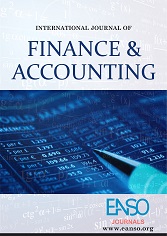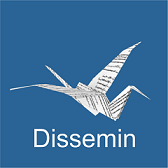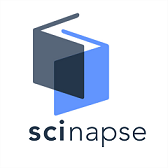The Paradox of Taxation and Development in Ivory Coast: An Empirical Inquiry into High Tax Burdens amidst Low Development Outcomes
Abstract
The paradox of taxation and development refers to a puzzling phenomenon where high tax burdens do not necessarily translate into commensurate economic development. This study investigates the existence and nature of this paradox in the Ivory Coast using quarterly time-series data from 2001 to 2024. Employing secondary data obtained from the World Bank, the study applies the Auto Regressive Distributed Lag (ARDL) model to examine the dynamic relationship between taxation and economic development. GDP per capita growth (annual%) is used as the dependent variable, while the independent variable is taxes on income, profits, and capital gains (% of revenue). Empirical results reveal a statistically significant positive relationship between GDP per capita growth and its first lag (coefficient = 0.703779), indicating economic growth persistence. Additionally, taxes on income, profits, and capital gains exhibit a statistically significant positive short-run impact (coefficient = 0.406910), but a negative and significant coefficient on its first lag (-0.392855). This mixed effect reflects the paradox: while taxation may initially support development through increased public revenues, its lagged impact may constrain long-term growth, possibly due to inefficiencies in public spending or distortions in private investment incentives. Diagnostic tests confirm robustness of the ARDL model, showing no evidence of serial correlation, heteroscedasticity, or cointegration issues. Based on these findings, we recommend enhancing the efficiency and transparency of public expenditure, reforming tax policy to minimise economic distortions, and aligning fiscal policy with inclusive development priorities to bridge the gap between tax collection and development outcomes in the Ivory Coast
Downloads
References
Barro, R. J. (1991). Economic Growth in a Cross Section of Countries. The Quarterly Journal of Economics, President and Fellows of Harvard College, vol. 106(2), pages 407-443.
Besley, T., & Persson, T. (2013). Taxation and development. In Handbook of Public Economics (Vol. 5, pp. 51–110). Elsevier.
Bird, R. M., & Zolt, E. M. (2005). Redistribution via taxation: The limited role of the personal income tax in developing countries. UCLA Law Review, 52(6), 1627–1695.
Bleaney, M., et al. (2001). Testing the endogenous growth model: Public expenditure, taxation, and growth over the long run. Canadian Journal of Economics, 34(1), 36–57.
Dickey, D. A., & Fuller, W. A. (1979). Distribution of the estimators for autoregressive time series with a unit root. Journal of the American Statistical Association, 74(366), 427–431.
Fjeldstad, O.-H., & Heggstad, K. (2012). Local Government Revenue Mobilisation in Anglophone Africa. ICTD Working Paper 7.
Gujarati, D. N., & Porter, D. C. (2009). Basic Econometrics (5th ed.). McGraw-Hill.
IMF. (2018). Sub-Saharan Africa Regional Economic Outlook: Domestic Revenue Mobilization and Private Investment. International Monetary Fund.
IMF. (2020). Republic of Côte d’Ivoire: Selected Issues. IMF Country Report No. 20/154.
Joshi, A., et al. (2014). Taxing the informal economy: The current state of knowledge and agendas for future research. The Journal of Development Studies, 50(10), 1325–1347.
Keen, M. (2012). Taxation and development—Again. International Tax and Public Finance, 19(2), 177–197.
Lütkepohl, H. (2005). New Introduction to Multiple Time Series Analysis. Springer.
Moore, M. (2008). Between coercion and contract: Competing narratives on taxation and governance. Institute of Development Studies.
Musgrave, R. A., & Musgrave, P. B. (1989). Public Finance in Theory and Practice. McGraw-Hill.
Ndulu, B. J., et al. (2007). The Political Economy of Economic Growth in Africa, 1960–2000. Cambridge University Press.
Nkoro, E., & Uko, A. K. (2016). Autoregressive Distributed Lag (ARDL) cointegration technique: Application and interpretation. Journal of Statistical and Econometric Methods, 5(4), 63–91.
OECD. (2014). Revenue Statistics in Africa: Comparative Tables. OECD Publishing.
Pesaran, M. H., et al. (2001). Bounds testing approaches to the analysis of level relationships. Journal of Applied Econometrics, 16(3), 289–326.
PwC. (2023). Worldwide Tax Summaries: Corporate and Individual Income Tax Rates. PricewaterhouseCoopers.
Sen, A. (1999). Development as Freedom. Oxford University Press.
Stock, J. H., & Watson, M. W. (2015). Introduction to Econometrics (3rd ed.). Pearson.
Tanzi, V. & Zee, H. (2000). Tax Policy for Emerging Markets: Developing Countries. National Tax Journal, vol. 53(2), 299-322.
UNDP. (2023). Human Development Report 2023. United Nations Development Programme.
UNECA. (2019). Domestic Resource Mobilization for Sustainable Development in Africa. United Nations Economic Commission for Africa.
World Bank. (2022). Ivory Coast Economic Update: Strengthening Domestic Revenue Mobilization for Post-COVID Recovery. World Bank Publications.
World Bank. (2023). World Development Indicators.
Wooldridge, J. M. (2013). Introductory Econometrics: A Modern Approach (5th ed.). Cengage Learning.
Copyright (c) 2025 Kagarura Willy Rwamparagi, Nahabwe Patrick Kagambo John

This work is licensed under a Creative Commons Attribution 4.0 International License.




























